Any discussion about watches is incomplete without the mention of the best and the rarest pocket watches ever crafted, not to mention the most expensive pocket watch ever.
These are timepieces that represents the apex of watch design, carries luxury and grace, and have historical significance.
We list eight of the most exceptional pocket watches made by the world’s top watchmakers.
Henry Graves’ The Supercomplication

At the turn of the 20th century, New York banker and collector Henry Graves, Jr. was in a friendly horological competition with Ohio automobile tycoon James Ward Packard. The goal was to own the timepiece with the most complications.
Packard possessed the most complicated watch at the time, known as “The Packard.” Henry Graves secretly commissioned Patek Philippe to create the most complicated watch. In 1933, after four years of development and manufacture, the watch was delivered to Graves.
Known as The Supercomplication, its 18-carat case encloses 24 complications and 900 components – including 443 screws, 70 jewels, 110 wheels and various moving parts. Its features include a chart of the New York City nighttime sky, a chronological calendar, a chimes that play the same melody heard in London’s Big Ben and keeps an accurate account of New York’s sunrise and sunset.
The watch was displayed in the Seth G. Atwood’s Time Museum since 1953. When the museum closed in 1999, the timepiece was put into auction. During that time it became the world’s most expensive pocket watch ever sold when the bid closed at $11,002,500 USD.
On November 11, 2014 In Geneva, Switzerland, during an auction at the Sotheby’s event, the famous and completely unique Patek Philippe Supercomplication pocket watch got the final price of 23,237,000 Swiss Francs – a massive amount that converts to over $24,000,000 USD. It is the most expensive bid anyone has ever paid for a timepiece.
Patek Philippe Caliber 89

In 1989 Patek Philippe released Caliber 89 to celebrate its 150th anniversary. With 33 complications, this commemorative timepiece became the world’s most complicated watch.
Four watches were made out of four different metals – platinum, yellow gold, white gold and rose gold. It took nine years of development, planning and manufacture to complete the watch using centuries-worth of watchmaking techniques.
Caliber 89 is made of 1,728 parts and weighs 1.1 kg. It integrates a map of the Geneva sky, the Georgian calendar, time of sunrise and sunset in Geneva, month, year, decade, century and phases of the moon.
Current estimates put the value of Patek Philippe’s Caliber 89 at USD 6 million.
Breguet Marie-Antoinette No. 160

Considered as “Queen” or “Mona Lisa” of all timepieces, the Breguet No. 160 is a horological masterpiece by genius watchmaker Abraham Louis-Breguet. It was commissioned in 1783 as a gift to Marie Antoinette by an unknown admirer. It was completed in 1827, 34 years after the death of Marie Antoinette and four years after its maker Breguet passed away.
Twenty-three (23) complications are encased in 18-carat gold and a clear crystal glass dial to show off its superb mechanisms. Perpetual calendar, thermometer, shock-absorbing device, the phases of the moon and a repeater that chimes the hour are some of its features.
The Queen changed hands several times for more than a century before finally becoming part of Sir David Lionel Salomons’ extensive clock collection along with 124 Breguets. The collection was inherited by Salomons’ daughter Vera who, in turn, bequeathed it to the LA Mayer Museum of Islamic Arts in Israel before her death in 1969. The museum opened in 1974.
In 1983, the timepiece was stolen from the museum along with other museum artifacts. The crime went unsolved for 25 years until an anonymous seller offered it to the museum for USD 30,000 in 2007. After years of investigation, it was found out that the heist was planned and executed by master thief Na’aman Diller. The anonymous seller turned out to be Diller’s widow Nili Shomrat.
While No. 160 was lost, Nicolas G. Hayek of Swatch Group felt the need to re-make its lost masterpiece. So he assembled a team of master watchmakers and started to re-create No. 160 from photos and books. The product is the Breguet Grande Complication No. 1160.
Marie-Antoinette Grande Complication No. 160 is valued at, at least, USD 30 million and is back on display in LA Mayer Museum for Islamic Arts.
Breguet No. 5
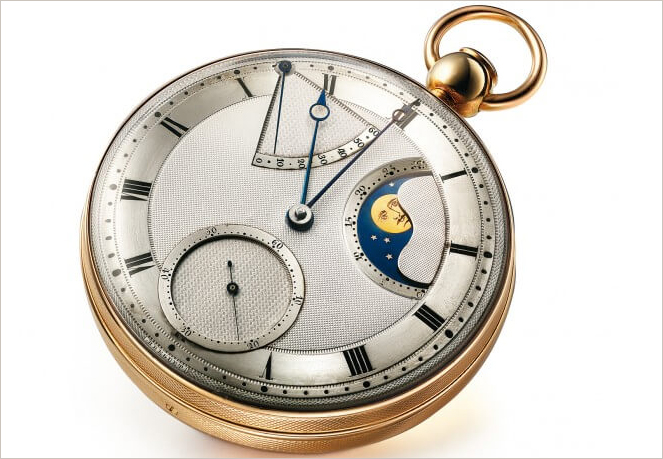
Completed in 1794, the Breguet No. 5 is considered to be the highest point of European watchmaking and the best ever by the most innovative watchmaker in history Abraham Louis-Breguet.
Breguet No. 5 comes with a perpetual winding movement with “à toc” quarter repeater housed in 18-karat yellow gold etched with barleycorn’ guilloché pattern. The dial is made of silvered gold engraved and painted black Roman numerals. It is equipped with a 60-hour power reserve indicator, a moon-phase and age indicator and a sub-dial for seconds.
The original Breguet No. 5 is now part of the Breguet Collection. Six replicas were released by Breguet in 2005. The last of the replicas was sold for USD 1.9 million.
You can view more of the company Breguet watches here
Mahatma Gandhi Zenith Pocket Watch

Gandhi is probably India’s greatest independence leader in history, so it’s not surprising that his personal properties are priced collectibles for their historical significance.
The Zenith pocket watch which he carried with him throughout his travels is considered to be a rare item of value to both collectors and the Indian government and its people.
The Zenith pocket watch has No. 421357, Case No. 49529. It was made in 1910 and features an alarm function and Arabic numerals. It has a diameter of 49 mm and 16 mm thick.
In March 2009, Gandhi’s Zenith pocket watch along with his glasses and sandals were put into auction in New York much to the protest of the Indian government. It was acquired by liquor baron Vijay Mallya during a New York Antiquorum auction for USD 1.8 Million through phone bidding.
Vijay Mallya promised to return the pocket watch to India.
Queen Victoria Pocket Watches

Twelve years after the company’s foundation, Patek Philippe watches became fashionable when Queen Victoria bought a Patek Philippe pocket watch during the Great Exhibition in London held in the Crystal Palace.
Queen Victoria owned two elegant Patek Philippe timepieces. The watch she bought in the Great Exhibition is a pendant-style key-wound type. It can be worn on a ribbon, sash or hanging from a pin. This timepiece is cased in yellow gold, decorated with diamonds and enameled with royal blue.
Another Patek Philippe she brought during the exhibition is a brooch-style timepiece. The watch is made of gold and features the classic Breguet hands to display the hours and minutes. The brooch is blue-enameled and jeweled with diamonds. This style was patented by Jean-Andrien Philippe in 1845.
An inscription that reads “no. 4536 Invention Brevetee de Patek Philippe Co a Geneve” is engraved on the gold secondary protective cover of the brooch watch.
Pope Pius IX Pocket Watch

Pope Pius IX, the second longest-reigning Pope in Church history, was fascinated with the graceful design of Patek Philippe pocket watch. The Swiss Bishop of Lausanne, Cardinal Gaspard Mermillod, presented the Poppe with a custom-made Patek Philippe pocket watch in 1867. The timepiece was bought for 1,370 Swiss francs.
The timepiece is encased in a 49 mm 18-karat gold enameled with Pope Pius IX’s coat-of-arms. It is equipped with quarter repeaters with two chimes and a second dial. An inscription in its dome translates to “Father, King, May you rule the souls and the hearts, Geneva 29 June 1867.”
Parmigiani Fleurier Fibonacci Pocket Watch

In honor to the famous Italian mathematician Leonardo Pisano Bigolo, known as Fibonacci, Swiss luxury watchmaker Parmigiani Fleurier created a pocket watch made of palladium.
The Fibonacci pocket watch features mother-of-pearl counters and a dial made of white gold. The case of the pocket watch is decorated with an enameling of a lotus flower intentionally designed to resemble Fibonacci’s Golden Ratio. It has a perpetual calendar and a minute repeater with cathedral chimes.
The timepiece is available by special order and will take up to two years to complete. It is currently priced at USD 2,400,000. Parmigiani was established in 1975 by Michel Parmigiani.


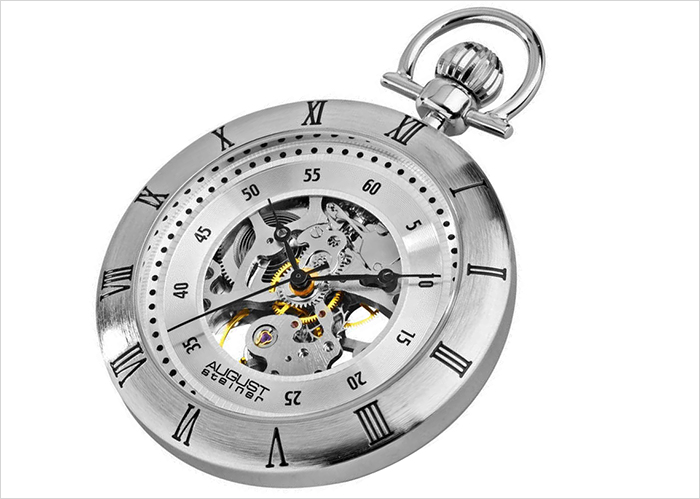
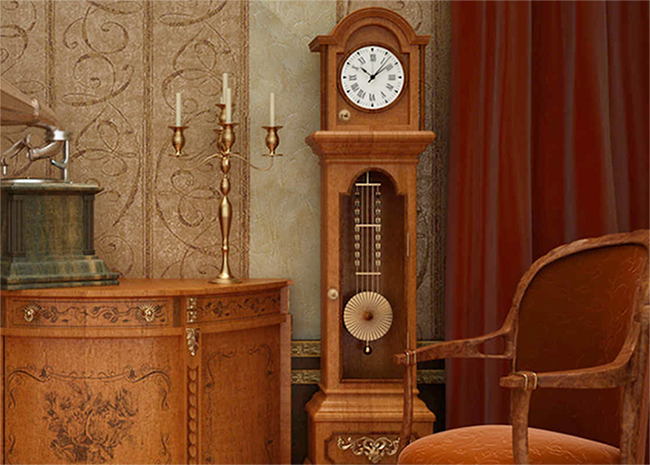
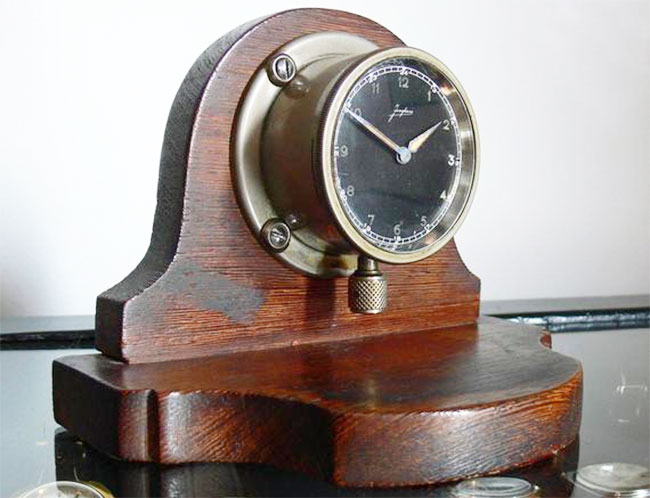

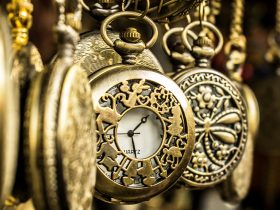



Leave a Reply